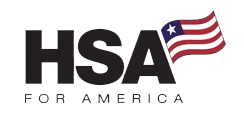
You’re not alone. Many people feel trapped in a system that seems designed to benefit big insurance companies rather than the patients it’s supposed to protect.
If you’re tired of paying more and getting less, it’s time to look at better options. In this article, we break down why the system feels so broken and explore smarter, more affordable ways to take control of your healthcare.
How the Health Insurance Scam Is Driving Costs Higher
Over the last decade, health insurance costs have soared, leaving many to wonder if they’ve been caught in a health insurance scam.
The Affordable Care Act (ACA), commonly known as “Obamacare,” was introduced in 2010 with the promise of making healthcare more affordable and accessible.
While it did help expand coverage, it also came with major drawbacks that have made insurance more expensive and restrictive for many Americans.
Here’s how the system has made healthcare less affordable over time:
- Rising Premiums. They told us that premiums would fall. Instead, premiums rose substantially. In reality, insurance actually became less affordable for middle-class families that did not qualify for subsidies.
- Limited Choices. Some areas, especially rural regions, witnessed a decline in the number of insurance providers available in the marketplace. This limited competition often led to higher prices and fewer choices for consumers.
- High Deductibles. In order to keep monthly premiums reasonable, many families had to opt for higher annual deductibles. So, even though people had insurance, they needed to cover more initial costs out-of-pocket. This prevented many from seeking regular medical care.
- Narrow Networks. To keep costs down, some insurance providers cut back on their network of providers. This meant more limited choices of doctors and specialists for subscribers. This was particularly challenging for patients with specific medical needs.
- Employer Mandate: Small businesses with more than 50 full-time employees were required to provide health insurance. This discouraged small business growth and led to reduced working hours for some employees to keep them under the full-time threshold.
- Marketplace Glitches. The central hub for purchasing ACA-compliant insurance, Healthcare.gov, has been plagued with technical glitches and problems over the years. This has caused frustration for many users who are trying to locate affordable health insurance plans.
Compare Pricing on the Best Insurance Plans Available
Deceptive Deductibles and Out-of-Pocket Limits for 2025
In 2025, the average monthly premium for an Affordable Care Act (ACA) health insurance plan is approximately $635, totaling $7,620 annually.
For families without subsidies, annual premiums can exceed $22,000, varying significantly by location.
These figures exclude deductibles and other out-of-pocket expenses, which often require individuals to pay an additional $5,000 or more before their insurance begins covering medical costs.
When unexpected medical emergencies occur, these high costs can lead to severe financial consequences, including debt and potential bankruptcy.
Did you know?
Medical debt remains one of the leading causes of bankruptcy, even among those with insurance coverage.
Strategic Decision-Making
Health insurance works well for some but can be a costly burden for others.
When regulations allow insurance companies to profit mainly by raising premiums, the burden is not shared equally. The government covers part of the cost for some, while others pay the full price, leaving many hardworking citizens at a disadvantage.
The system often favors insurers and select groups, leaving others with skyrocketing costs and limited benefits.
Breaking Free from the Health Insurance Scam
If you’re tired of overpaying for coverage that doesn’t truly protect you, there are better alternatives to consider.
Here’s how you can take control of your healthcare and escape the health insurance scam:
- Join a Health Sharing Plan: If you don’t have pre-existing conditions, you can drop traditional insurance and switch to a health sharing plan. These programs typically cost less than unsubsidized health insurance and allow you to choose any doctor.
- Opt for a High Deductible Health Plan (HDHP) and Use an HSA: A high deductible health plan (HDHP) combined with a Health Savings Account (HSA) offers more control over your healthcare dollars. With an HSA, you’re not limited by narrow networks—you can use your funds at any provider.
- Consider Direct Primary Care (DPC): DPC eliminates insurance from primary care entirely. You pay your doctor a flat monthly fee for unlimited visits, longer appointments, and direct access without dealing with an insurance middleman.
The bottom line? You have options. By exploring alternatives like health sharing, HSAs, and DPC, you can save money, gain flexibility, and take charge of your healthcare.
Compare Pricing on the Best HealthShare Plans Available
Take Control of Your Healthcare
Health insurance often feels like a rigged system, where insurers profit while many individuals struggle with rising costs and limited options.
By exploring alternatives like health sharing, HSA’s, and DPC’s, you can take control of your healthcare decisions. Understanding your options and planning strategically can help you avoid unnecessary costs while ensuring you get the care you need.
Not sure which path is right for you? Talk to a Personal Benefits Manager today. They can help you compare plans, explore alternatives, and find a solution that fits your budget and healthcare needs without overpaying for coverage you don’t use.
For Further Reading:
Here are some additional pages related to this blog:

Hi! I’m Misty Berryman, and I’m one of your Personal Benefits Managers. I like working with HSA for America because we’re creating solutions to healthcare problems. Our focus on money-saving alternatives like HSA plans and health sharing programs, and the variety of health share programs we offer, are what set us apart. Read more about me on my Bio page.


